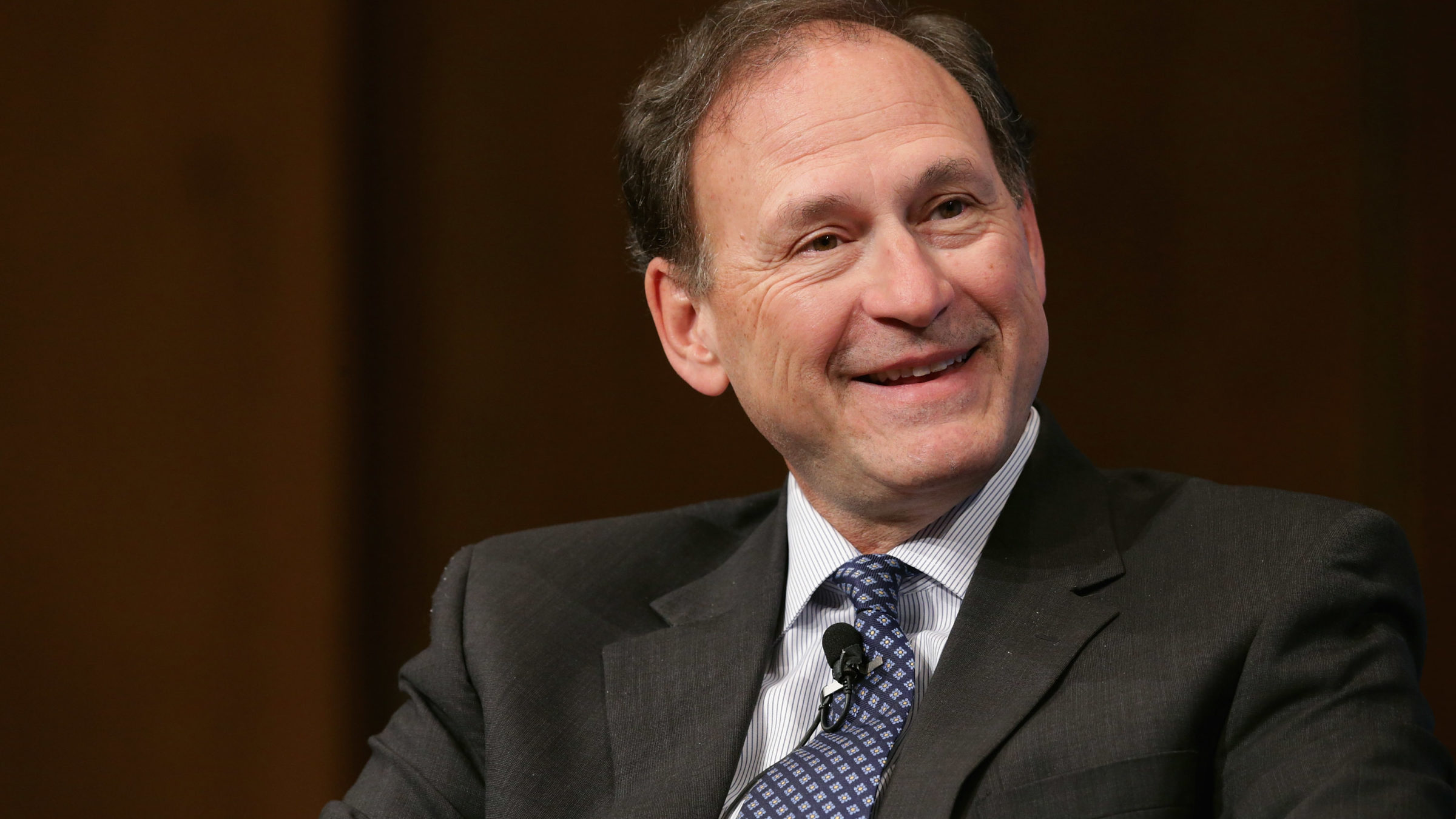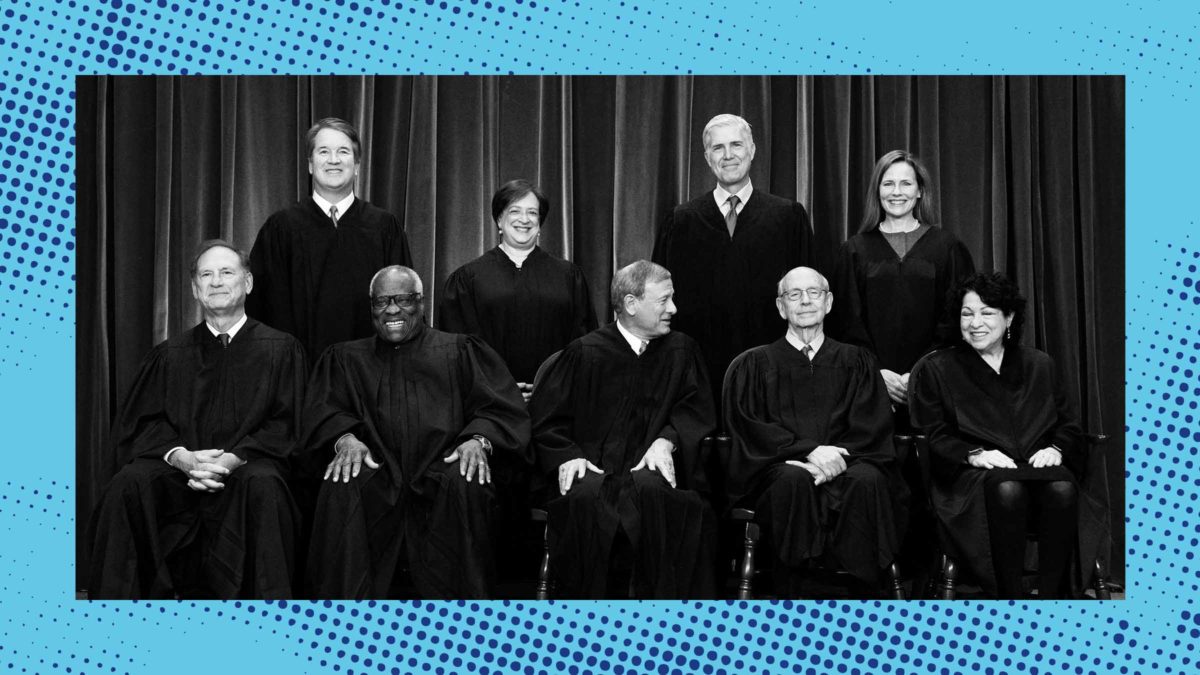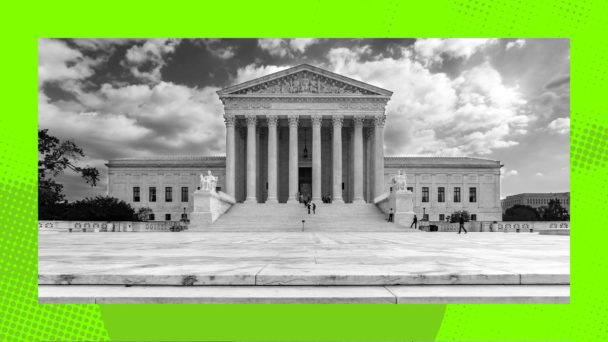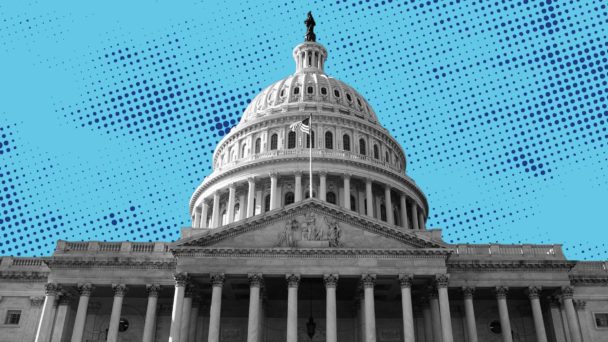Judicial deliberations are notoriously secretive. (For the most part, anyway.) But reporting by The New York Times today cracked the Supreme Court’s cone of silence and revealed ugly truths about the Court’s decision-making in Dobbs v. Jackson Women’s Health Organization, the 2022 decision overturning Roe v. Wade, rescinding the constitutional right to abortion, and relegating half of the country to second-class citizenship.
The American legal system is premised on the idea that judges rely on the thoughtful and rigorous exchange of reasoned arguments—an idea that has persisted despite all evidence to the contrary. Yet in Dobbs, the Times has proven, that conscientiousness was nowhere to be found. Instead, the article reveals a reliance on schemes and brute force to achieve conservative policy priorities by any means necessary.

Alito’s ‘excited to discriminate against women’ face
Some of the details are striking. For instance, the Court rescheduled its discussion on whether to take up the case nine times, a calculated decision by Justice Samuel Alito to wait for the late Justice Ruth Bader Ginsburg to be replaced by Justice Amy Coney Barrett, a reliable anti-choice vote. After the Court decided to hear Dobbs—without the support of Chief Justice John Roberts or the three liberal justices—Justice Brett Kavanaugh suggested they sit on the announcement for several months, to make it appear as if they hadn’t made up their minds about what they planned to do before RBG’s body was cold.
In the months that followed, Justice Stephen Breyer made numerous attempts to peel off Kavanaugh and Justice Amy Coney Barrett, reminding them they just got to the Court and didn’t have to destroy it so quickly. “What’s the rush?” he reportedly asked. Barrett did actually change her mind and say the Court shouldn’t hear the case, but it only takes four votes for the Court to accept a case, so her defection didn’t make a difference. This created an awful symmetry between the decision to take up Dobbs and the Court’s eventual ruling: a few conservative men overrode women’s will and compelled them to go forward with something harmful that they did not want. The men were betting that Barrett, who is on the Court because of her anti-abortion views, would affirm her ideological commitments when the real decision was on the line. They were right.
Once the real votes were cast, Alito circulated his 98-page draft of the Dobbs opinion to the rest of the Court in February. Justice Neil Gorsuch replied a mere ten minutes later indicating that he would sign on to the opinion and had no changes. I’ve taken longer to decide what I want for lunch than Gorsuch took to think on whether there’s any constitutional problem with governmental reproductive coercion. The justice exhibited a level of ‘I ain’t reading all that’ that must only be reserved to people with lifetime job security and no real oversight.
The Times’ account of the Dobbs decision-making process draws a damning portrait of the Court as an institution, which has long benefited from deference and respect that it does not deserve. The Court represents its decisions as the product of historical research and intellectualism, but they’re actually the result of ideologically-motivated backroom wheeling and dealing. The Court’s conduct is not so different from that of legislators; the justices just have comfier work clothes.
The Supreme Court has been burdened in recent months by an outpouring of stories about its ethical violations and unaccountability. Reporting on the political maneuvering that powers the Court’s attacks on people’s rights will only bring it down further.




